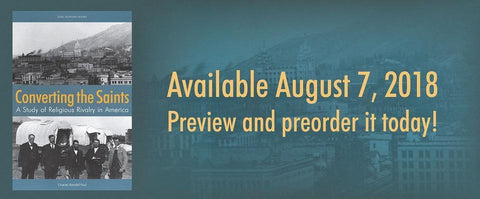News
Q&A with David B. Ostler for Bridges: Ministering to Those Who Question July 23 2019

| Download a free sample preview | Order your copy |
Q: Give us a brief background into who you are and why you decided to write this book.
A: I’m a retired father and husband, with six children and five, almost six, grandchildren. My children are wonderful and some no longer believe in basic principles and doctrines of the Church. I’ve been a leader in the Church and with my wife, served two full time and two church service missions. Our last mission was in our stake, working with leaders to better understand why people disaffiliate from the Church.
As we worked with our stake leaders, we research and studied the frequency and causes why people, particularly previously faithful adults, choose to disaffiliate. We found that Church-wide most leaders see disaffiliation as a very important concern in their ward, stake and particularly in their family. We also found that many leaders were not fully aware of the underlying reasons and didn’t feel they fully understood how to help. They probably feel the same in their homes.
So, after completing that calling, I decided that I could take what we learned and create a resource for members to better understand why people leave so that we could find common ground, build understanding and truly minister to those who no longer worship with us. I conducted some original research, interviewed leaders and disaffiliated members, and studied the words of our Church leaders as well as experts in the field. In this research, I learned that the pain of disaffiliation isn’t just felt by that person’s family or leaders, but also by the disaffiliating member. They often feel isolation, fear, anger and other hurtful emotions; often unintentionally caused by their family, friends, and leaders.
I hope this book can bridge that misunderstanding and give us a better understanding to build trusting and meaningful relationships with those who no longer believe as we do.
Q: Who is your intended audience for the book and how do you hope it will be used?
A: I think there will be two readers for the book. I wrote the book for fully believing members so that they can better understand their friends, ward member, or family member who no longer believes in the truth claims of the Church of Jesus Christ of Latter-day Saints. I hope it gives each reader understanding on how to build a trusted relationship with that person. With that understanding, I hope that some of the pain, fear, and hurt that is felt on both sides can be turned into love and acceptance. Perhaps in some cases, that understanding will create an opportunity for someone to “come back” or to have someone “stay.” For believing members, I hope that reading this book will help build a bridge with a better understanding as they minister to those who doubt.
I also realize readers will include some who no longer believe. I hope that this book will give them hope that we are trying to be more understanding and that their relationship with their families, friends and Church members can be strong and rich, even with differences in belief.
This isn’t a leadership book. But knowing that each leader is also a member and that we rotate in and out of ward and stake callings, I include some ideas that leaders can use with their callings. The principles are the same and can be applied in families, with friends, as church members, and when we serve in church callings.
Q: We hear numerous reports of religious disaffiliation in our modern age, particularly in Western society. How are these trends reflected in The Church of Jesus Christ of Latter-day Saints?
A: All churches and denominations are experiencing a drop in membership and participation. Younger Americans, particularly Millennials and Gen-Z, see little need to participate in organized religion. In fact, the fastest-growing group of religious identification is “spiritual, but non-religious.” As Latter-day Saints, we are experiencing these same trends. The underlying reasons include society’s broad acceptance of those who are non-religious, people being comfortable going it alone, less trust of institutions in general and of religions specifically, more opportunities to find friends and like-minded people through social media and other settings, and more. The reasons are many.
For the Church in the United States, data from social scientists show that disaffiliation for those born after 1970 is about 39% and, although the sample size is low, that 55% of millennials have disaffiliated. Most of those who disaffiliate remain on the rolls of the Church, but no longer think of themselves of Latter-day Saints. And they disaffiliate younger than previous generations. The average age of millennial disaffiliation is 18.4 years while for boomers it was 23.7 years.
Q: What are a few root causes for religious disaffiliation among Latter-day Saints?
A: Latter-day Saints experience all the same issues as other religions, but there are unique issues which we face. Some leave because they become aware of issues in our history which are controversial or seem inconsistent with our values. They may have concerns about particular Church policies, like our teachings about LGBTQ issues. They may disagree with the way in which women and men serve and experience the Church. Church culture and what they experience in their wards and classes may feel judgmental and perfectionistic. They may be different in some way, like being childless, or being single, experiencing mental illness, being politically liberal. Others just don’t feel the Church addresses the areas which are meaningful to them, including issues of social justice, poverty, racism, sexism or violence.
Q: What are a few typical responses among families and congregations towards those who disaffiliate or become disaffected with the Church’s teachings?
A: As I interviewed members and read their comments and experiences in my surveys, I was frankly surprised by the disconnect between fully believing members and local leaders and those who doubt, question, or have left the Church. Many believing members feel the primary reasons why people leave is because they are offended, have sinned, or are lazy. They sometimes blame the disaffiliating member for having not studied scriptures, prayed, or attended the temple often enough. Those members who are struggling with their faith often have serious doctrinal, historical, or cultural concerns about the Church. When members or local leaders don’t have a true understanding of why these people leave or struggle to stay, their efforts are often ineffective, or worse, hurtful, and push members further away.
Sometimes it is because they don’t understand, but also, it causes fear when a family member learns their child, sibling, or spouse is struggling with belief. It threatens their hope for an eternal family as they worry about their spiritual welfare.
Without thinking about it, we make a snap judgment as to why they have left and assume that it is because they have been offended or because of secret sin. We may be afraid to ask them because we don’t want to offend them. We might keep them at arm’s length and be afraid that they will infect us with doubt. Some disaffiliated members feel that they are labeled as “anti-Mormon” or “apostates” and don’t feel that they are welcome. We may exclude them from our social life because we are uncomfortable with them or with having our children associate with them. Leaders may release them from their callings even though they are willing to serve.
Sometimes in our interactions with disaffiliated members, we seek to testify or explain away their concerns when they just want to keep their close relationship, friendship, or continue to worship even with their doubts.
Q: What are a few ways we can minister to disaffiliated and disaffected members, both individually and as congregations?
First and most important, we need to learn to listen to them individually and collectively. We really don’t know their concerns unless we take the time to listen. Listening is hard—it means that we suspend trying to explain their decision and instead really let them share with us what they are feeling and why. Our minds will naturally try and explain it away and find the fault in their logic or life that lead them to their new beliefs. As they are talking, our minds might be filled with how we can counter their concerns. We might be tempted to encourage them to read more scripture, pray harder, or go to the temple. But first, we need to just listen to understand their concern and why it is important to them. Giving unsolicited advice rarely works.
While listening, we need to take their concerns seriously. These issues are very real to them and we should never try and minimize their concerns. We need to validate, even if we disagree. Later, after they know that we really care about their concerns and how it impacts them, perhaps we can discuss ways to think about the issue or even more forward without a clear resolution.
Q: What brief message can you offer to family members or friends of individuals who have become disaffected with the Church’s teachings or who have chosen to disaffiliate?
A: As we listen and validate, we can answer some questions; and when we can’t, we can mourn and comfort our family or friend who has become disaffected. We can find common ground, even if we aren’t 100% united in the values we live and in our spiritual beliefs. Our relationships can be meaningful, close, and full of love, even with these differences.
If they come back, that’s wonderful. If they don’t, we can trust the Lord and enjoy every moment, even within our differences. I take great comfort from Elder Orson F. Whitney, who said, “Our Heavenly Father is far more merciful, infinitely more charitable than even the best of his servants, and the everlasting gospel is mightier in power to save than our narrow finite minds can comprehend.” Our Heavenly Parents love our family member or friend far more than we can comprehend. They want their happiness too, today and forever.
David B. Ostler
July 2019
Free ebook offer: The End of the World, Plan B: A Guide for the Future November 08 2018
FREE EBOOK FOR NEWSLETTER SUBSCRIBERS
Book description:
Environmental decline, political gridlock, war and rumors of war, decadence, and immorality. The End of the World, Plan B traces the idea of the end, or destruction, of the world through a number of spiritual traditions. It shows that our present understanding of the “end game” has been distorted by a modern emphasis and demand on justice as the ultimate good. As an alternative to this self-destructive approach, Charles Shirō Inouye shows that in these traditions, justice is not the isolated end in itself that we ought strive for; rather it is taught in tandem with its balancing companion: compassion. Plan B is a hopeful alternative to our fears about how things are going.
“Inouye reminds us that justice is not enough and that obedience is not the currency of salvation. He urges us to recognize the limits of the law, to see that, severed from a willingness to compassionately suffer with the world’s imperfection and evanescence, our righteous hunger for balancing life's books will destroy us all.” — Adam S. Miller
DID YOU KNOW? Amazon pays authors and publishers roughly half the royalty percentage on ebooks compared to other services such as Apple, Barnes & Noble, and Kobo. Please consider increasing your support for independent authors and independent publishing by switching from Kindle to Apple Books (iBooks), Nook, or Kobo. Thank you!
STEPS TO DOWNLOAD
**Ebook file must be downloaded onto a laptop or desktop computer. After downloading, you can transfer the file to your ebook reader, tablet, or smartphone app.**
1. Enter your email address in the form below to sign up for our newsletter and receive a welcome email with instructions (check your junk mail if you do not see it). If you are already a newsletter subscriber, you should have received an email with this free ebook offer and instructions to download.
2. Click the here to open the ebook page on our website. Select which ebook format you wish to download (Kindle, Apple, Nook/Kobo). The price will show as $13.95 but will change to $0.00 as you complete these steps.
3. Click Add to Cart.
4. Click Checkout.
5. On the Customer Information page, fill out your name and address information. Enter the discount code that you received. The discount code will reduce the price of the book to $0.00.
6. Click Continue to Payment Method. You will not be required to enter payment info. DO NOT ENTER ANY CREDIT CARD INFORMATION.
7. Click Complete Order. You will be emailed a link to download the ebook along with instructions for transferring the ebook file to an e-reader device or tablet/smartphone app (check your junk mail if you do not see it).
Note: Once you have downloaded your ebook, it will be on your computer's hard drive, most likely in the "Downloads" folder. Kindle format will end with ".mobi." All other formats will end with ".epub."
Q&A Part 2 with the Editors of The Expanded Canon: Perspectives on Mormonism & Sacred Texts September 11 2018

Hardcover $35.95 (ISBN 978-1-58958-637-6)
Part 2: Q&A with Brian D. Birch (Part 1)
Q: When and how did the Mormon Studies program at UVU launch?
A: The UVU Mormon Studies Program began in 2000 with the arrival of Eugene England. Gene received a grant from the National Endowment for the Humanities to explore how Mormon Studies could succeed at a state university. A year-long seminar resulted that included a stellar lineup of consultants and guest scholars. From that point forward, the Religious Studies Program has developed multiple courses complemented by our annual Mormon Studies Conference and Eugene England Lecture—to honor Gene’s tragic and untimely passing in 2001. The program also hosts and facilitates events for independent organizations and publications including the Society for Mormon Philosophy and Theology, the Dialogue Foundation, the Interpreter Foundation, Mormon Scholars in the Humanities, Association for Mormon Letters, and others.
Q: How is the UVU Mormon Studies program distinguished from Mormon Studies programs that have emerged at other campuses?
A: Mormon Studies at UVU is distinguished by the explicitly comparative focus of our work. Given the strengths of our faculty, we have emphasized courses and programming that addresses engagement and dialogue across cultures, faith traditions, and theological perspectives. Permanent course offerings include Mormon Cultural Studies, Mormon Theology and the Christian Tradition, Mormon Anthropology, and Mormon Literature. Our strengths lie in areas other than Mormon history, which is well represented at other institutions—and appropriately so. Given the nature of our institution, our events are focused first and foremost on student learning, but all our events are free and open to the public and we welcome conversation between scholars and nonprofessionals.
Q: How long has the annual UVU Mormon Studies Conference been held, and what have been some of the topics of past conferences?
A: As mentioned above, the Mormon Studies Conference was first convened by Eugene England in 2000, and to date we have convened a total of nineteen conferences. Topics have ranged across a variety of issues including “Islam and Mormonism,” “Mormonism in the Public Mind,” “Mormonism and the Art of Boundary Maintenance,” “Mormonism and the Internet,” etc. We have been fortunate to host superb scholars and to bring them into conversation with each other and the broader public.
Q: Where did the material for the first volume, The Expanded Canon, come from?
A: The material in The Expanded Canon emerged came from our 2013 Mormon Studies Conference that shares the title of the volume. We drew from the work of conference presenters and added select essays to round out the collection. The volume is expressive of our broader approach to bring diverse scholars into conversation and to show a variety of perspectives and methodologies.
Q: What are a few key points about this volume that would be of interest to readers?
A: Few things are more central to Mormon thought than the way the tradition approaches scripture. And many of their most closely held beliefs fly in the face of general Christianity’s conception of scriptural texts. An open or expanded canon of scripture is one example. Grant Underwood explores Joseph Smith’s revelatory capacities and illustrates that Smith consistently edited his revelations and felt that his revisions were done under the same Spirit by which the initial revelation was received. Hence, the revisions may be situated in the canon with the same gravitas that the original text enjoyed. Claudia Bushman directly addresses the lack of female voices in Mormon scripture. She recommends several key documents crafted by women in the spirit of revelation. Ultimately, she suggests several candidates for inclusion. As the Mormon canon expands it should include female voices. From a non-Mormon perspective, Ann Taves does not embrace a historical explanation of the Book of Mormon or the gold plates. However, she does not deny Joseph Smith as a religious genius and compelling creator of a dynamic mythos. In her chapter she uses Mormon scripture to suggest a way that the golden plates exist, are not historical, but still maintain divine connectivity. David Holland examines the boundaries and intricacies of the Mormon canon. Historically, what are the patterns and intricacies of the expanding canon and what is the inherent logic behind the related processes? Additionally, authors treat the status of the Pearl of Great Price, the historical milieu of the publication of the Book of Mormon, and the place of The Family: A Proclamation to the World. These are just a few of the important issues addressed in this volume.
Q: What is your thought process behind curating these volumes in terms of representation from both LDS and non-LDS scholars, gender, race, academic disciplines, etc?
A: Mormon Studies programing at UVU has always been centered on strong scholarship while also extending our reach to marginalized voices. To date, we have invited guests that span a broad spectrum of Mormon thought and practice. From Orthodox Judaism to Secular Humanists; from LGBTQ to opponents to same-sex marriage; from Feminists to staunch advocates of male hierarchies, all have had a voice in the UVU Mormon Studies Program. Each course, conference, and publication treating these dynamic dialogues in Mormonism are conducted in civility and the scholarly anchors of the academy. Given our disciplinary grounding, our work has expanded the conversation and opened a wide variety of ongoing cooperation between schools of thought that intersect with Mormon thought.
Q: What can readers expect to see coming from the UVU Comparative Mormon Studies series?
A: Our 2019 conference will be centered on the experience of women in and around the Mormon traditions. We have witnessed tremendous scholarship of late in this area and are anxious to assemble key authors and advocates. Other areas we plan to explore include comparative studies in Mormonism and Asian religions, theological approaches to religious diversity, and questions of Mormon identity.
Download a free sample of The Expanded Canon
Listen to an interview with the editors
Upcoming events for The Expanded Canon:
Tue Sep 18 at 7pm | Writ & Vision (Provo) | RSVP on Facebook
Wed Sep 19 at 5:30 pm | Benchmark Books (SLC) | RSVP on Facebook
Q&A Part 1 with the Editors of The Expanded Canon: Perspectives on Mormonism & Sacred Texts August 29 2018

Hardcover $35.95 (ISBN 978-1-58958-637-6)
Part 1: Q&A with Blair G. Van Dyke (Part 2)
Q: How is the Mormon Studies program at Utah Valley University distinguished from Mormon Studies programs that have emerged at other universities?
A: The Mormon Studies program at UVU is distinguished by the comparative components of the work we do. At UVU we cast a broad net across the academy knowing that there are relevant points of exploration at the intersections of Mormonism and the arts, Mormonism and the sciences, Mormonism and literature, Mormonism and economics, Mormonism and feminism, Mormonism and world religions, and so forth. Additionally, the program is distinguished from other Mormon Studies by the academic events that we host. UVU initiated and maintains the most vibrant tradition of creating and hosting relevant and engaging conferences, symposia, and intra-campus events than any other program in the country. Further, a university-wide initiative is in place to engage the community in the work of the academy. Hence, the events held on campus are focused first and foremost for students but inviting the community to enjoy our work is very important. This facilitates understanding and builds bridges between scholars of Mormon Studies and Mormons and non-Mormons outside academic orbits.
Q: Where did the material for The Expanded Canon come from?
A: The material that constitutes volume one of the UVU Comparative Mormon Studies Series came from an annual Mormon Studies Conference that shares the title of the volume. We drew from the work of some of the scholars that presented at that conference to give their work and ours a broader audience. Generally, the contributors to the volume are not household names or prominent authors that regularly publish in the common commercial publishing houses directed at Mormon readership. As such, this volume introduces that audience to prominent personalities in the field of Mormon Studies. It is not uncommon for scholars in this field of study to look for venues where their work can reach a broader readership. This jointly published volume accomplishes that desire in a thoughtful way.
Q: What are a few key points about this volume that would be of interest to readers?
A: Few things are more central to Mormon thought than the way the tradition approaches scripture. And many of their most closely held beliefs fly in the face of general Christianity’s conception of scriptural texts. An open or expanded canon of scripture is one example. Grant Underwood explores Joseph Smith’s revelatory capacities and illustrates that Smith consistently edited his revelations and felt that his revisions were done under the same Spirit by which the initial revelation was received. Hence, the revisions may be situated in the canon with the same gravitas that the original text enjoyed. Claudia Bushman directly addresses the lack of female voices in Mormon scripture. She recommends several key documents crafted by women in the spirit of revelation. Ultimately, she suggests several candidates for inclusion. As the Mormon canon expands it should include female voices. From a non-Mormon perspective, Ann Taves does not embrace a historical explanation of the Book of Mormon or the gold plates. However, she does not deny Joseph Smith as a religious genius and compelling creator of a dynamic mythos. In her chapter she uses Mormon scripture to suggest a way that the golden plates exist, are not historical, but still maintain divine connectivity. David Holland examines the boundaries and intricacies of the Mormon canon. Historically, what are the patterns and intricacies of the expanding canon and what is the inherent logic behind the related processes? Additionally, authors treat the status of the Pearl of Great Price, the historical milieu of the publication of the Book of Mormon, and the place of The Family A Proclamation to the World. These are just a few of the important issues addressed in this volume.
Q: What is your thought process behind curating these volumes in terms of representation from both LDS and non-LDS scholars, gender, race, academic disciplines, etc?
A: Mormon Studies programing at UVU has always been centered on solid scholarship while simultaneously broadening tents of inclusivity. To date, we have invited guests that span spectrums of thought related to Mormonism. From Orthodox Judaism to Secular Humanists; from LGBTQ to opponents to same-sex marriage; from Feminists to staunch advocates of male hierarchies, all have had a voice in the UVU Mormon Studies Program. Each course, conference, and publication treating these dynamic dialogues in Mormonism are conducted in civility and the scholarly anchors of the academy. Given our disciplinary grounding, our work has expanded the conversation and opened a wide variety of ongoing cooperation between schools of thought that intersect with Mormon thought.
Download a free sample of The Expanded Canon
Listen to an interview with the editors
Tue Sep 18 at 7pm | Writ & Vision (Provo) | RSVP on Facebook
Wed Sep 19 at 5:30 pm | Benchmark Books (SLC) | RSVP on Facebook
Contesting Truth through Mutual Openness July 18 2018

Charles Randall Paul will be speaking on the topic of religious diplomacy and signing copies of his book at Weller Book Works (Salt Lake City) on Tuesday, Aug. 7th at 6:30 PM and at Writ & Vision (Provo) on Thursday, Aug. 9th at 7PM. Both events are free to attend.
Humans are social influencers by their very existence. They are always intentionally persuading each other in some fashion. All human life includes continual negotiation of social activities from “pass the salt” to “should we get married?” When one of us believes a purpose is good and an action right, that influences a response from others—and the response influences further responses.
While the ideal might be complete social unity or unconstrained freedom for all, human groups and societies should expect continual religious and ideological contestation. Within our interconnected societies, conflicting world-views and purposes are inevitable. No social program for peace will succeed that requires adamant believers to compromise or dilute their core values. Instead, we sustain peaceful tension within our societies through co-resistance and collaboration with our ideological rivals. Crucial to this is the absence of ill-will in our collaborative contestation.
Let me now make a distinction between these terms: Enemy, antagonist, agonist, ally, and friend. An enemy desires and acts to eliminate, enslave, or diminish others by passive or aggressive means. An antagonist acts like an enemy but does not desire to be one. If she presumes you are an enemy, she might be reacting defensively with no intent to harm you otherwise. An agonist is a fellow contestant who desires to win an ideological contest through persuasion. An ally is on your side because of shared interests. A friend desires your love and well-being and will self-sacrifice to promote it. It is possible to be an ally that is also really an enemy, but it is impossible to be a real friend and an enemy. However, your agonistic rival can also be your friend—but enduring (much less enjoying) this relationship is an acquired taste and skill.
If you have a real enemy, you need to defend yourself accordingly. But we need to determine first if antagonists are true enemies or agonists. An agonist desires to contest differences in order to bring about positive change for both sides, rather than the destruction of their rival. Sportsmanship is a common attitude of agonists. Persuading agonists to your side may make them allies; but converting agonists to trust and love can make them friends even while they remain persuasive agonists. The path forward lies in vulnerable openness between rivals with an open and honest disclosure of motives and beliefs. This requires courage to exchange critical and offensive ideas and ideals without taking offense. Let there be no mistake: openness that is truly open to change is always a dangerous experiment, especially for those who are concerned about diluting true orthodoxy (on the left or right) with relativism.
To prepare for inevitable contestations over religious, political, or ideological differences, I present ten useful attitudes and methods to remember when the pressure to either disengage or eliminate our fellow agonists becomes intense. I call this The Way of Mutual Openness:
Be Honest
Honesty begins when you look in the mirror. Who do you really think you are and who do want to become? When you are deeply honest, you acknowledge your motives for doing things and express your thoughts and feelings without faking it. Your honesty prompts others to respond the same way, and with open hearts and minds real communication results.
Be Kind
Kindness goes further toward building trust than the other practices listed here. It is not weak, naive, or mere politeness. Kindness is a language easily recognized and understood by everyone. Sincere kindness is a powerful way to influence others to desire to hear you. But, be wise: nothing shatters trust more than phony, manipulative kindness, or false respectfulness.
Listen Well
It is hard to listen well when you focus more on your feelings and thoughts than those of the person addressing you. Listening well is not remaining quiet before you insert your response; it is intense focus on a unique person with a desire for understanding. By listening like this to others you offer the gift of respectful empathy that everyone craves to receive. In return others feel like they should listen well to understand you.
Share the Floor
If you want to be taken seriously you must take others seriously. Sharing the floor means allowing others equal time to speak even when you “know” you are right and they are wrong. It acknowledges the mutual dignity of those engaged in conversation. Hogging the floor is disrespectful and rude, and it always undermines your persuasive ability when you appear dismissive or fearful of what others have to say.
Presume Good Will
We often presume that others do not have our best interests at heart. Sometimes they don’t. But you sabotage any honest communication with someone you presume to be stupid, duped, or ill-intentioned. Presuming good will is not agreeing with others’ beliefs or values. It means that you grant that others are clear thinking and good hearted unless they prove otherwise.
Acknowledge the Differences
Each human is uniquely different with a unique history and perspective. Acknowledging our important differences openly frees us to know where we stand without having to guess. It creates a tone of trust for real conversation. You cannot feel whole or honest if you focus only on similarities and avoid facing differences in deep beliefs and values.
Answer the Tough Questions
With genuine differences come tough questions—especially if the goal is a trusting relationship. When you answer tough questions in a straightforward way, sharing the floor equally and presuming good will, you build strong mutual trust. You can then face offensive issues without taking offense. However, diving deeper for better understanding has a limit. Aggressive interrogation or pushing for private details destroys trust.
Give Credit Where Credit is Due
Any compliment feels good, but a sincere compliment from an unexpected source such as a rival or critic can move our hearts powerfully toward trust. By openly admiring the excellence or good on “the other side” you demonstrate your honesty and fairness, and your confidence that your side can handle the truth. But be cautious—insincere compliments to manipulate or disarm others disastrously undermine any grounds for trust.
Speak Only for Yourself
Each of us is unique and we don’t like others—especially outsiders—to stereotype us or claim they know what we really believe or value. So, ask rather than tell others what they think and feel. It is tempting to speak for your friends and tribe members as if they all share the same view as you do. Except when you have been authorized to speak on behalf of others, speak only for yourself and encourage others to do likewise.
Keep Private Things Private
Humans are social beings, but their thoughts and feelings are private unless expressed. Personal dignity is based in large part on your freedom to choose when and where to share your inner self with others. Being open, honest, and trustworthy does not require you to disclose all things to all people. Keeping private things private means that you strictly honor someone’s choice to say something to you alone. If you cannot keep it private, you should ask the person not to share it.
These are the times that try our souls. In our increasingly polarized society, we will doubtless continue arguing over political, ideological, and religious differences. Based on years of experience in religious diplomacy, I believe the ten attitudes above will sustain with confidence anyone using them to actively engage in challenging and rewarding conversations that build healthy trust.
 Charles Randall Paul is board chair, founder, and president of the Foundation for Religious Diplomacy. He has lectured widely and written numerous articles on healthy methods for engaging differences in religions and ideologies. He is the author of Converting the Saints: A Study of Religious Rivalry in America.
Charles Randall Paul is board chair, founder, and president of the Foundation for Religious Diplomacy. He has lectured widely and written numerous articles on healthy methods for engaging differences in religions and ideologies. He is the author of Converting the Saints: A Study of Religious Rivalry in America.
A Very Brief History of D&C Section 132: The Plural Marriage Revelation February 14 2018

Section 132 of the Doctrine and Covenants was the last of Joseph Smith’s formal written revelations and it was a watershed in Mormonism for many reasons. Like many of Joseph Smith’s early revelations, the revelation was given to an individual, not a community. Its target was his own wife, Emma Hale Smith, largely in response to her rejection of plural marriage. Polygamy, the main theme of the July 1843 revelation, is a complex subject in Mormonism. This short work can only hope to discuss a few aspects that relate specifically to what is now Section 132 of the Doctrine and Covenants, and the impact that this revelation has had on Mormonism.
Mormon polygamy essentially began in Nauvoo. One of its functions was to serve as a threshold of loyalty to Joseph Smith. Taking the step of participating in polygamy was a high-cost social commitment for women and men. Polygamy not only tested loyalty to Smith, it might have even increased it—and not just while he lived. Joseph Smith took enormous risk in introducing polygamy to any individual. While he generally selected men and women who were already close to him and had demonstrated their commitment to Mormonism, it was dangerous to challenge some of the most fundamental boundaries of the religious and social landscape. Some dissented, such as first presidency counselor William Law and his wife Jane Law, both who later publicly opposed Smith. That opposition joined a sequence of events terminating in Smith’s assassination. After Smith’s death, church leaders who were among the insiders of plural marriage became his de facto successors.
In Utah, the Church faced increasing public opposition to the practice of “plurality.” Controversy flared as Utah transitioned from its hoped-for independent nation status into a territory of the United States. The territorial selection of officials brought federal appointees to the Mormon stronghold. Shocked by polygamy and Mormon control of the political process, those federal appointees left the territory with stories of obstructionism and wives in abundance among elite Mormon men. Those tales led LDS leadership to publish two relatively secret texts up to that point: the plural marriage revelation (now D&C 132), and an April 3, 1836 vision of Joseph Smith and Oliver Cowdery in the Kirtland, Ohio temple (now D&C 110). This public reveal of polygamy in 1852 solidified Washington’s opposition to Utah’s statehood. That building opposition (later called the “Raid” for the practice of U.S. Marshalls hunting polygamists) ultimately led the First Presidency to curtail the practice and preaching of plural marriage in Utah at the end of the 1880s. Public claims that the Church was still allowing new plural marriage in abundance placed heavy pressures on Church President Wilford Woodruff. After prayerful and careful consideration, Woodruff produced a document that denied current authorization of plural marriages in Utah. After meeting with fellow leaders over the document, it was edited to the succinct “Manifesto” (now Official Declaration 1), a press release statement that advised the abandonment of contracting plural marriage where it violated the law.
The statement was not intended to give the idea that D&C 132 was now void. And the psychological, sociological, metaphysical, and religious structures founded on it would take time to move and modify. Minutes and diaries of LDS apostles of the period show that many leaders thought the 1890 announcement must be temporary, that God would open the way to public polygamy once again. They, like Joseph Smith before them, saw their religious obligation as superior to their public political stance. Their commitment to the revelation and its claim as a part of the “restoration of all things” made it difficult to universally abandon the practice. Former Church President John Taylor and Woodruff himself had produced written revelations encouraging continued plural marriage. The result of these cross-pressures was that church-leader-sponsored polygamy continued through the next two decades, though in small and ever dwindling numbers. Complete termination seemed on the order of abandoning baptism or the temple endowment. The election of apostle Reed Smoot to the U.S. Senate firmed the LDS Church’s public opposition to post-manifesto polygamy, an opposition fueled strongly by Smoot himself. The plural marriage revelation formed a paradoxical cornerstone of Mormon belief in this environment as its sealing subtext became the core logic of the doctrine of eternal family over against its placing of polygamy as the higher law. Gradually, church leaders came to complete unity over ending all exceptions to public bans of the practice.
As Mormonism publicly forgot polygamy and embraced the role of quintessential clean-living white Americans, their position as an Intermountain West institution was accepted as the home of teetotaling, disciplined, and largely ordinary folk with quaint beliefs in an enchanted past. It was when LDS temples began to invade Christian fundamentalist home turf in places like Dallas and Atlanta that the plural marriage revelation again became a source of criticism among counter-cult ministries and a growing ex-Mormon publishing industry.
Section 132 never underwent the same textual expansion-contraction cycle that marked many of Smith’s other revelations during his lifetime. His life ended too soon for any revisions. It is nevertheless true that in many ways the July 12, 1843 plural marriage revelation has affected the course of Mormonism for nearly two centuries; and it was redacted, not with pen and ink, but with selective reading that shifted its focus from plural marriage onto eternal monogamous marriage. Yet, many important themes in current Mormonism are based on narratives derived from the plural marriage revelation. Section 132 is a deeply-embedded component of Church teachings on eternal family, the approach of the Church towards gay rights and marriage, and social issues such as the role of women within the Church and family life. It is not an exaggeration to say that the revelation on polygamy is one of the cornerstones that underlies what Mormonism is today.
William Victor Smith received a PhD in mathematics at the University of Utah, where he also studied history under Davis Bitton. After post-doctoral work at Texas Tech University, he worked at the University of Mississippi, the University of Pau, and Brigham Young University. He has been published in Dialogue: A Journal of Mormon Thought and is the admin for the Book of Abraham Project website. He currently lives with his wife Gailan in Orem, Utah. Together they have six children.
Mark your calendar
Please join us on Tuesday, March 13th at Writ & Vision in Provo for a special roundtable discussion of Textual Studies of the Doctrine and Covenants: The Plural Marriage Revelation. Panelists include Bill Smith, Lindsay Hansen Park, and Don Bradley. The event begins at 7:00 PM and is free to attend. Writ & Vision: 274 W Center Street, Provo, UT.
Textual Studies of the Doctrine & Covenants: The Plural Marriage Revelation
By William V. Smith
Part of the Contemporary Studies in Scripture series
Available February 27, 2018
Pre-order your copy
5 Things We Learned About the Jesus of Nazareth January 22 2018
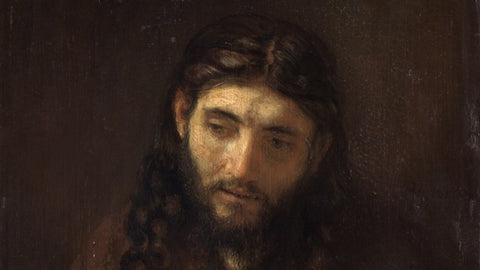
Consider the many different ways Jesus has been portrayed over the centuries or the ways his name has been employed in support of this or that cause. N. T. Wright, a prominent Jesus scholar and Anglican Bishop, observes that he is “almost universally approved of” but for “very different and indeed often incompatible reasons.” If this is the case, then we wondered what Jesus were we worshiping and whether that Jesus was one of our own making?
During the past half-century historians have made significant strides examining the most recently discovered source materials in order to think once again about existing documents like the four Gospels. The aim was to reconstruct the Jesus who the men and women in first-century Palestine would recognize and follow. Jesus was born into an ancient society constrained by millennia of social, theological, and political practices perpetuated by the minority ruling elite and facilitated by a vast majority of souls who knew of no other way. Periodically prophets would rail against the system in the name of God. But the great, colossus of ancient Rome remained sustained through the oppression of individuals, the very individuals that Jesus came to invite into a new, righteous Kingdom.
The Jesus of history and the Gospels largely displaced the conventions of his day with regard to women and the family, as well as the social standing of the poor, the wealthy, and the outcast.
On Women:
In the twenty-first century, when issues regarding the roles of men and women in religious environments are alive and controversial, Jesus’s treatment of women was prescient. His example and the privileges afforded the first female Christians provide important perspectives. The subject takes on added significance as we appreciate the meaning of the priestly roles that women play in Latter-day Saint temples. Echoing what N. T. Wright suggests in his recent book Surprised by Scripture, we must “think carefully about where our own cultures, prejudices, and angers are taking us, and make sure we conform not to the stereotypes the world offers but to the healing, liberating, humanizing message of the gospel.” He continues, “[we live in a time when] we need to radically change our traditional pictures of what men and women are and of how they relate to one another within the church, and indeed of what the Bible says on this subject.”
On the Family:
What little Jesus had to say about the family is jarring to modern ears. He replaced the household of his day with a new universal family called the Kingdom of God where all were brothers and sisters. All were welcome: the poor and the rich, men and women, bond and free, high and low, Jew and Gentile. Members were asked to live in a communal order where everyone had what they needed.
On the Poor:
At the end of Jesus’s ministry, his priorities had not shifted from those he announced by way of the Isaiah text he read as he stood in the synagogue in Nazareth. Prior to his betrayal, Jesus spoke about the Final Judgment. He reminded those who heard him then, as well as those who hear him today, that when our lives are weighed in the balance, we will be judged not on what we know, or how many things we owned, or on how many church meetings we attended; rather, we will be judged on the basis of how well we loved our neighbors, and how well we fed the hungry, clothed the naked, cared for the sick, and visited those in need (Matt. 25:31–46).
On the Wealthy:
Matthew’s Gospel records that Jesus spoke to a “rich young man” who, by his own report, kept all the commandments in Torah, the Mishnah, and the Oral Traditions. Jesus asked him to go one step further and distribute all his wealth equally amongst the poor in order to be a part of God’s kingdom (Matt. 19:21-22). The apocryphal Gospel of Hebrews records that when the young man could not take that step, he “began to scratch his head because he did not like that command.” But then, Mark’s Gospel says, “Jesus felt genuine love for [this man]” (Mark 10:21 NLT).
Father James Martin, in a memoir on his pilgrimage to the Holy Land in 2014, writes about his encounter with the story, standing on the supposed spot where Jesus told it: “Jesus ‘loved him’? Where did that come from? I had heard this Gospel story dozens of times. How had I missed that line? . . . Those three words . . . altered the familiar story and thus altered how I saw Jesus. No longer was it the exacting Jesus demanding perfection; it was the loving Jesus offering [agency]. Now I [and we] could hear him utter those words with infinite compassion for the man. . . . Jesus explicitly offers a promise of abundance to everyone” (Jesus: a Pilgrimage, 271).
Jesus invited all to be bound to him by the “covenant of salt.”
The Covenant of Salt is a three-part obligation. The meaning of the name of the covenant would have been obvious to the men and women who followed him: salt was and is the root word of salvation and it was an enormously valuable commodity in their day. At the end of our study, we came to understand a little better what N. T. Wright observes – that what mattered most to Jesus was that his true disciples were “the kind of people through whom the kingdom will be launched on earth.” Being like Jesus meant that each of us qualified for heaven through serving his “lambs.” Being like Jesus was about loving others and thereby transforming the earth, making it a Godlike place. It was what Jesus earnestly prayed for and by example asked us to pray for: “Thy kingdom come. Thy will be done in earth, as it is in heaven” (Matt. 6:10 KJV; emphasis added). God’s ultimate rule on earth will come about because we, as true disciples of Jesus Christ, are the light of the world and the salt of the earth (Matt.5:13, 14 KJV). We have covenanted. We have come away from this pilgrimage with a resolve to “have salt in ourselves, and have peace one with another” (Mark 9:50 KJV).
James and Judith McConkie will be speaking and signing books at Writ & Vision in Provo, Utah, on Tuesday, January 30 at 7 pm, and at Benchmark Books in Salt Lake City on Wednesday, February 7 at 5:30 pm..These events are free to the public.
 James W. McConkie has JD from the S. J. Quinney College of Law at the University of Utah. His practice has focused in the area of torts and civil rights for more than four decades. He has been an adjunct professor at Westminster College teaching Constitutional law for non-lawyers. He has taught Church History and New Testament courses for BYU’s Division of Continuing Education for over 15 years with his wife Judith and is the author of Looking at the Doctrine and Covenants for the Very First Time. In 2017 he and his law partner Bradley Parker created the Refugee Justice League, a non-profit organization of attorneys and other professionals offering pro-bono help to refugees who have been discriminated against on the basis of their religion, ethnicity, or national origin.
James W. McConkie has JD from the S. J. Quinney College of Law at the University of Utah. His practice has focused in the area of torts and civil rights for more than four decades. He has been an adjunct professor at Westminster College teaching Constitutional law for non-lawyers. He has taught Church History and New Testament courses for BYU’s Division of Continuing Education for over 15 years with his wife Judith and is the author of Looking at the Doctrine and Covenants for the Very First Time. In 2017 he and his law partner Bradley Parker created the Refugee Justice League, a non-profit organization of attorneys and other professionals offering pro-bono help to refugees who have been discriminated against on the basis of their religion, ethnicity, or national origin.
 Judith E. McConkie has an MFA in printmaking from BYU and a PhD in philosophy of art history and museum theory from the University of Utah. She has taught art history at the secondary and then university levels for over 40 years. She was the Senior Educator at BYU’s Museum of Art and Curator of the Utah State Capital during its major renovation project from 2004–2010. During that time she authored With Anxious Care: the Restoration of the Utah Capital. She continues to teach in BYU’s Division of Continuing Education with her husband James. She has published in Sunstone and Dialogue: A Journal of Mormon Though and has presented at Sunstone’s annual symposium. Her prints and watercolors have been exhibited nationally and in the Henry Moore Gallery in London, England. She and James are the parents of three children and 12 grandchildren.
Judith E. McConkie has an MFA in printmaking from BYU and a PhD in philosophy of art history and museum theory from the University of Utah. She has taught art history at the secondary and then university levels for over 40 years. She was the Senior Educator at BYU’s Museum of Art and Curator of the Utah State Capital during its major renovation project from 2004–2010. During that time she authored With Anxious Care: the Restoration of the Utah Capital. She continues to teach in BYU’s Division of Continuing Education with her husband James. She has published in Sunstone and Dialogue: A Journal of Mormon Though and has presented at Sunstone’s annual symposium. Her prints and watercolors have been exhibited nationally and in the Henry Moore Gallery in London, England. She and James are the parents of three children and 12 grandchildren.
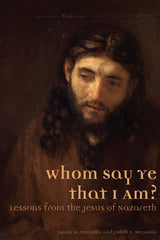 |
Whom Say Ye that I Am? Lessons from the Jesus of Nazareth Available Jan 30, 2018 |
Twelve Days of Kofford 2017 November 21 2017
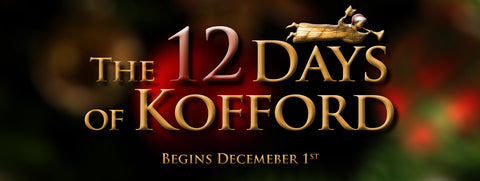
Greg Kofford Books is once again pleased to offer twelve days of discounted holiday shopping from our website!
HERE IS HOW IT WORKS: Every morning from Dec 1th through the 12th, we will be posting a DISCOUNT CODE on our Facebook or Twitter pages. Use this discount code on the corresponding day to receive 30% off select titles. The final day will be an e-book flash sale on Amazon.com.
To help you plan, here are the dates, titles, and sale prices we will be offering beginning Dec 1st. These sales are limited to available inventory. You must follow our Facebook or Twitter pages to get the discount code. Orders over $50 qualify for free shipping. Customers in the Wasatch Front area are welcome to pick orders up directly from our office in Sandy, UT.
Day 1 — Brant Gardner collection
 |
Second Witness, Vol 1: First Nephi $39.95 hardcover |
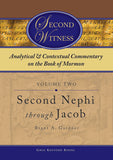 |
Second Witness, Vol 2: Second Nephi through Jacob $39.95 hardcover |
 |
Second Witness, Vol 3: Enos through Mosiah $39.95 hardcover |
 |
Second Witness, Vol 4: Alma $49.95 hardcover |
 |
Second Witness, Vol 5: Helaman through Nephi $39.95 hardcover |
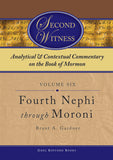 |
Second Witness, Vol 6: Fourth Nephi through Moroni $39.95 hardcover |
 |
The Gift and the Power: Translating the Book of Mormon $34.95 paperback |
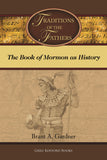 |
Traditions of the Fathers: The Book of Mormon as History $34.95 paperback |
 |
The Garden of Enid: Adventures of a Weird Mormon Girl $22.95 paperback |
 |
The Garden of Enid: Adventures of a Weird Mormon Girl $22.95 paperback |
Day 3 — The Mormon Image in Literature
 |
The Mormoness; Or, The Trials of Mary Maverick: $12.95 paperback |
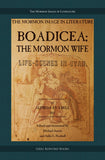 |
Boadicea; the Mormon Wife: Life Scens in Utah $15.95 paperback |
 |
Dime Novel Mormons $22.95 paperback |
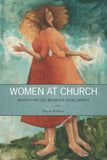 |
Women at Church: Magnifying LDS Women's Local Impact $21.95 paperback |
 |
Mormon Women Have Their Say: Essays from the Claremont Oral History Collection $31.95 paperback |
 |
Voices for Equality: Ordain Women and Resurgent Mormon Feminism $32.95 paperback |
 |
Joseph Smith's Polygamy, Vol 1: History $34.95 paperback |
 |
Joseph Smith's Polygamy, Vol 2: History $34.95 paperback |
 |
Joseph Smith's Polygamy, Vol 3: Theology $25.95 paperback |
 |
Joseph Smith's Polygamy: Toward a Better Understanding $19.95 paperback |
 |
Modern Polygamy and Mormon Fundamentalism: The Generations after the Manifesto $31.95 paperback |
 |
Mormon Polygamous Families: Life in the Principle $24.95 paperback |
 |
Prisoner for Polygamy: The Memoirs and Letters of Rudger Clawson at the Utah Territorial Penitentiary, 1884–87 $29.95 paperback |
 |
Who Are the Children of Lehi? DNA and the Book of Mormon $15.95 paperback |
 |
“Let the Earth Bring Forth”: Evolution and Scripture $15.95 paperback |
 |
Mormonism and Evolution: The Authoritative LDS Statements $15.95 paperback |
 |
Parallels and Convergences: Mormon Thought and Engineering Vision $24.95 paperback |
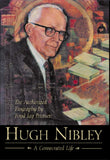 |
Hugh Nibley: A Consecrated Life $32.95 hardcover |
 |
“Swell Suffering”: A Biography of Maurine Whipple $31.95 paperback |
 |
William B. Smith: In the Shadow of a Prophet $39.95 paperback |
 |
LDS Biographical Encyclopedia, 4 Vols $259.95 paperback |
 |
The Man Behind the Discourse: A Biography of King Follett $29.95 paperback |
 |
Liberal Soul: Applying the Gospel of Jesus Christ in Politics $22.95 paperback |
 |
A Different God? Mitt Romney, the Religious Right, and the Mormon Question $24.95 paperback |
 |
Common Ground—Different Opinions: Latter-day Saints and Contemporary Issues $31.95 paperback |
 |
Even Unto Bloodshed: An LDS Perspective on War $29.95 paperback |
 |
War & Peace in Our Time: Mormon Perspectives $29.95 paperback |
 |
The End of the World, Plan B: A Guide for the Future $13.95 paperback |
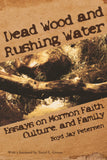 |
Dead Wood and Rushing Water: Essays on Mormon Faith, Culture, and Family $22.95 paperback |
 |
Mr. Mustard Plaster and Other Mormon Essays $20.95 paperback |
 |
Writing Ourselves: Essays on Creativity, Craft, and Mormonism $18.95 paperback |
 |
On the Road with Joseph Smith: An Author's Diary $14.95 paperback |
 |
Hearken O Ye People: The Historical Setting of Joseph Smith's Ohio Revelations $34.95 hardcover |
 |
Fire and Sword: A History of the Latter-day Saints in Northern Missouri, 1836–39 $36.95 hardcover |
 |
A House for the Most High: The Story of the Original Nauvoo Temple $29.95 paperback |
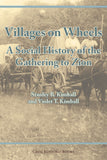 |
Villages on Wheels: A Social History of the Gathering to Zion $24.95 paperback |
 |
Mormonism in Transition: A History of the Latter-day Saints, 1890–1930, 3rd ed. $31.95 paperback |
Day 11 — International Mormonism
 |
Tiki and Temple: The Mormon Mission in New Zealans, 1854–1958 $29.95 paperback |
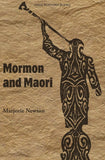 |
Mormon and Maori $24.95 paperback |
 |
The Trek East: Mormonism Meets Japan, 1901–1968 $39.95 paperback |
 |
From Above and Below: The Mormon Embrace of Revolution, 1840–1940 $34.95 paperback |
 |
The History of the Mormons in Argentina $24.95 paperback |
 |
For the Cause of Righteousness: A Global History of Blacks and Mormonism, 1830–2013 $32.95 paperback |
Q&A with Scott Hales for The Garden of Enid, Part 2 February 02 2017
Pre-Order Your Copy Today
What are some of the themes that pop up in part 2?
As I was writing The Garden of Enid, I was interested in unpacking ideas about faith, history, human connection, and truth. Part two is especially interested in truth—one of the slipperiest words in language and Mormonism. For much of the book, Enid is trying to anchor herself to some kind of monolithic notion of truth. She wants to finds something stable in the universe, but she finds that the closer she thinks she gets to monolithic truth, the less monolithic it appears.
I think her journey encourages readers to reflect on the value of truth and how they want it to function in their own lives.
Cameos played a big role in part 1. Who are some of the cameos that we can expect in part 2?
Joseph Smith continues to make cameos in part two, as do Eliza R. Snow, Evan Stephens, and the Book of Abraham mummy. Enid also talks with people like Jane Austen, Karl Maeser, Doctor Philastus Hurlbut, Charles Anthon, George A. Smith, and Juanita Brooks. The lost 116 pages and Joanna Brooks’ Book of Mormon Girl also make appearances.
Some of my favorite cameos in part two involve fictional or mythological figures from pop culture. Enid talks with Matt and Mandy from The Friend magazine, Big Foot, and Charlie Brown.
The most significant cameo in the book, however, is the late Mormon scholar Eugene England, who dresses like the Angel Moroni and acts like Virgil in Dante’s Divine Comedy. Unlike other cameo characters, who always show up in simple four-panel comics, Eugene takes Enid on a five-page odyssey through space and time, belief and doubt.
How does her relationship with her mother develop in part 2?
The relationship becomes much rockier in part two. Enid looks to her mother’s past for answers about her own identity, but she often goes about it the wrong way. She and her mother have a traumatic falling out, and much of the book is about what happens after their relationship hits the fan. In both books, Enid struggles to see her mother as a real person, which causes her to say and do hurtful things to her mother. In part two, things go from bad to worse, but they also get better in unforeseen ways.
What do you think Enid learns about herself in part 2?
At the end of part one, Enid begins to see herself as someone who is capable of having meaningful relationships with other people. In part two, she learns that cultivating such relationships makes her vulnerable to the raw emotions that define human experience. This make her a much more awkward and vulnerable character than the weird Mormon girl we saw in part one, but it also makes her more endearing and relatable. Her heart gets much bigger in part two.
What are some of the challenges you have felt in writing this story?
Writing Enid’s story rarely felt like a challenge. Perhaps my biggest challenge was never letting my natural reserve get in the way of her audacity. Enid and I share many of the same interests, but we have different temperaments. Maybe that’s why I found her story so easy to write.
Of course, many of the comics touch on controversies within Mormonism, and addressing them with sensitivity was sometimes a challenge. Some satirists like to aggravate wounds, but my satire is meant to sting like antiseptic.
What do you hope readers will take away from Enid’s life?
I hope people will read Enid and decide to stop being sucky to each other. In other words, I hope Enid’s life brings about world peace and better music on the radio.
I also hope people will read Enid and be inspired to tell stories of their own. Mormonism is an inexhaustible landscape for creative people. I hope better writers and artists than me will read Enid and want to draw on their own experiences with Mormonism to tell stories that enrich our understanding of and appreciation for the Mormon landscape.
Will there be a part 3? There has to be a part 3. I mean, there really, really has to be a part 3.
Part three is always a possibility. I have an idea for a comic about Enid’s last summer before she goes to college. The Garden of Enid has always unfolded in real time, however, and I don’t know if I have the time this summer to do that with this story. I’ll probably start drawing it anyway to see where it goes. If I end up showing Enid as a freshman in college, so be it. I’m sure it will be awkward.
But I don’t plan to start a part three until I finish my current serial comic, Chronicles of Wyler, which is a kind of spin-off prequel to The Garden of Enid. Readers of The Garden of Enid: Adventures of a Weird Girl, Part One know Wyler from Enid’s EFY experience. Chronicles of Wyler tells the story, more or less, of how Wyler got to EFY. I’m almost finished with it, but one Wyler comic takes about three times longer to draw than an Enid comic—and I have much less time to devote to it than I had when I was drawing Enid comics all the time.
Chronicles of Wyler is a different reading experience than The Garden of Enid, and has a much smaller fan base, but I think readers who like Enid will like Wyler’s story as well.
Pre-Order Your Copy Today
On the twelfth day of Kofford: $1.99 flash sale on Kindle e-books! December 12 2016

On the twelfth day of Kofford, fill your digital stockings with our HUGE e-book promotion. Today only, each of the following titles are only $1.99 on Kindle! PLUS, to help you prepare for the upcoming D&C year in Gospel Doctrine class, we are offering B. H. Robert's classic six-volume A Comprehensive History of the Church on Kindle for only $3.99!
This flash sale ends at midnight tonight (Dec. 12th)
On the eighth day of Kofford: 30% contemporary issues titles! December 08 2016

All contemporary issues titles are 30% off December 8th. These special prices are only available for one day, so don't wait!
Orders over $50 qualify for free shipping. Also, local Utah customers can opt to pick up their order directly from our office in Sandy (select this option under the shipping menu).
For more information about the Twelve Days of Kofford holiday sales, click here.
 |
Women at Church: Magnifying LDS Women's Local Impact Retail: $21.95 |
 |
Common Ground—Different Opinions: Latter-day Saints and Contemporary Issues Retail: $31.95 |
 |
The Liberal Soul: Applying the Gospel of Jesus Christ in Politics Retail: $22.95 |
 |
Voices for Equality: Ordain Women and Resurgent Mormon Feminism Retail: $32.95 |
On the third day of Kofford: 30% off personal essay titles! December 03 2016

All personal essay titles are 30% off on December 3rd. These special prices are only available for one day, so don't wait!
Orders over $50 qualify for free shipping. Also, local Utah customers can opt to pick up their order directly from our office in Sandy (select this option under the shipping menu).
For more information about the Twelve Days of Kofford holiday sales, click here.
 |
Dead Wood and Rushing Water: Essays on Mormon Faith, Culture, and Family Retail: $22.95 |
 |
Mr. Mustard Plaster and Other Mormon Essays Retail: $20.95 |
 |
Writing Ourselves: Essays on Creativity, Craft, and Mormonism Retail: $18.95 |
Twelve Days of Kofford Christmas Sale 2016 November 30 2016

MERRY CHRISTMAS FROM GREG KOFFORD BOOKS
Greg Kofford Books is pleased to announce our annual holiday sale on select popular titles beginning December 1st – December 12th.
Here's how it works: at the stroke of midnight each day, a new blog post will go live on our website listing that day's special offerings along with a discount code that you can enter at check-out to get the holiday price. It's that simple. We will also be posting the daily offering and discount code on our Facebook page at 7am.
*Orders over $50 qualify for free shipping (continental U.S. customers only). Local Utah customers can stop by our office in Sandy to pick up their orders as well. Holiday inventory on some titles may be limited, so be sure to take advantage of the daily sale early.*
To help you plan in advance, here are our scheduled sales:
Day 1 — Brant Gardner titles
 |
Second Witness: Analytical & Contextual Commentary on the Book of Mormon series
|
 |
The Gift and Power: Translating the Book of Mormon |
 |
Traditions of the Fathers: The Book of Mormon as History Best Religious Non-fiction Award, Association for Mormon Letters |
Day 2 — Adam Miller titles (essays in Mormon theology)
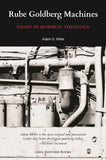 |
Rube Goldberg Machines: Essays in Mormon Theology Retail $18.95 |
 |
Future Mormon: Essays in Mormon Theology Retail: $18.95 |
Day 3 — Personal Essays
 |
Dead Wood and Rushing Water: Essays on Mormon Faith, Culture, and Family Retail: $22.95 |
 |
Mr. Mustard Plaster and Other Mormon Essays by Mary Lithgoe Bradford Retail: $20.95 Sale price: $14.67 |
 |
Writing Ourselves: Essays on Creativity, Craft, and Mormonism Retail: $18.95 |
Day 4 — Blake T. Ostler titles
 |
Exploring Mormon Thought series by Blake T. Ostler 30% off each title |
 |
Fire on the Horizon: A Meditation on the Endowment and Love of Atonement Retail: $17.95 |
Day 5 — Contemporary Studies in Scripture
 |
Authoring the Old Testament: Genesis — Deuteronomy Retail: $26.95 |
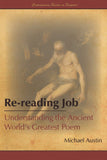 |
Re-reading Job: Understanding the Ancient World's Greatest Poem Retail: $20.95 |
 |
Search, Ponder, and Pray: A Guide to the Gospels Retail: $27.95 |
 |
Beholding the Tree of Life: A Rabbinic Approach to the Book of Mormon Retail: $21.95 |
 |
The Vision of All: Twenty-five Lectures on Isaiah in Nephi's Record Retail: $25.95 |
Day 6 — International Mormonism
 |
The Trek East: Mormonism Meets Japan, 1901–1968 Retail: $39.95 |
 |
Mormon and Maori Retail: $24.95 Best International Book Award, Mormon History Association |
 |
Tiki and Temple: The Mormon Mission in New Zealand, 1854–1958 Retail: $29.95 Best International Book Award, Mormon History Association |
 |
For the Cause of Righteousness: A Global History of Blacks and Mormonism, 1830–2013 Retail: $32.95 Best Book Award, Mormon History Association |
 |
The History of the Mormons in Argentina Retail: $24.95 |
 |
From Above and Below: The Mormon Embrace of Revolution, 1840 – 1940 Retail: $34.95 Best International Book Award, Mormon History Association |
Day 7 — Polygamy titles
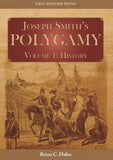 |
Joseph Smith's Polygamy: History and Theology Now in paperback! 30% off each title |
 |
Joseph Smith's Polygamy: Toward a Better Understanding Retail: $19.95 |
 |
Modern Polygamy and Mormon Fundamentalism: The Generations after the Manifesto Retail: $31.95 Best Book Award, John Whitmer Historical Association |
 |
Mormon Polygamous Families: Life in the Principle Retail: $24.95 |
 |
Prisoner for Polygamy: The Memoirs and Letters of Rudger Clawson at the Utah Territorial Penitentiary, 1884–87 Retail: $29.95 |
Day 8 — Contemporary Issues
 |
Women at Church: Magnifying LDS Women's Local Impact Retail: $21.95 |
 |
Common Ground—Different Opinions: Latter-day Saints and Contemporary Issues Retail: $31.95 |
 |
The Liberal Soul: Applying the Gospel of Jesus Christ in Politics Retail: $22.95 |
 |
Voices for Equality: Ordain Women and Resurgent Mormon Feminism Retail: $32.95 |
Day 9 — Biography
 |
Hugh Nibley: A Consecrated Life Retail: $32.95 Best Biography Award, Mormon History Association |
 |
“Swell Suffering”: A Biography of Maurine Whipple Retail: $31.95 Best Biography Award, Mormon History Association |
 |
William B. Smith: In the Shadow of a Prophet Retail: $39.95 Best Biography Award, John Whitmer Historical Association |
 |
The Man Behind the Discourse: A Biography of King Follett Retail: $29.95 |
Day 10 — War and Peace
 |
War & Peace in Our Time: Mormon Perspectives Retail: $29.95 |
 |
Even unto Bloodshed: An LDS Perspective on War Retail: $29.95 |
 |
The End of the World, Plan B: A Guide for the Future Retail: $13.95 |
 |
Saints of Valor: Mormon Medal of Honor Recipients, Updated 2nd Edition Retail: $31.95 |
Day 11 — Mormon Image in Literature
 |
The Mormoness; Or, The Trials Of Mary Maverick: A Narrative Of Real Events Retail: $12.95 |
 |
Boadicea; the Mormon Wife: Life Scenes in Utah Retail: $15.95 |
Day 12 — Ebook Flash Sale — $1.99 for select titles
To be announced. Stay tuned!
Year in Review and the Year Ahead December 29 2015
2015 was another amazing year for Greg Kofford Books! Here is a recap of the year and a look ahead to what is coming in 2016 and beyond.
Award-winning Publications
Several Kofford titles won awards from the Mormon History Association and the Association for Mormon Letters in 2015:
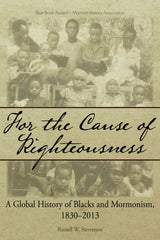 |
MHA Best Book Award For the Cause of Righteousness: A Global History of Blacks and Mormonism, 1830-2013 “Invaluable as a historical resource.” — Terryl L. Givens, author of Parley P. |
 |
MHA Best International Book Award Mormon and Maori “Unflinchingly honest yet unfailingly compassionate.” — Grant Underwood, |
 |
AML Religious Non-Fiction Award Re-reading Job: Understanding the Ancient World's Greatest Poem “A new gold standard for Mormon writings.” — Julie M. Smith, author, Search, |
All 2015 Titles
Here are all of the great titles that Greg Kofford Books published this past year:
 |
Mr. Mustard Plaster and Other Mormon Essays “Vibrant portraits of a kind and loving soul.” — Boyd J. Peterson, author of |
 |
Perspectives on Mormon Theology: Scriptural Theology Each essay takes up the relatively un-self-conscious work of reading a |
 |
Joseph Smith's Polygamy: Toward a Better Understanding “It is a book that will be read and discussed for years to come.” — Robert L. |
 |
Even Unto Bloodshed: An LDS Perspective on War “Indispensable for all future Mormon discussions of the subject.” — Daniel C. |
 |
William B. Smith: In the Shadow of a Prophet “Walker’s biography will become essential reading.” — Mark Staker, author of |
 |
Voices for Equality: Ordain Women and Resurgent Mormon Feminism “Timely, incisive, important.” — Joanna Brooks, co-editor of Mormon |
 |
Traditions of the Fathers: The Book of Mormon as History “Illuminating, prismatic views of the Book of Mormon.” — Mark Alan Wright, |
Looking Ahead at 2016 and Beyond
Here are a few eagerly-anticipated titles currently scheduled for the first part of 2016 and a look at what is in the works for the future:
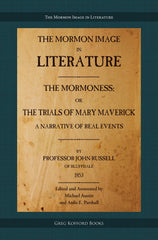 |
The Mormon Image in Literature Series The Mormoness; Or, The Trials Of Mary Maverick: A Narrative Of Real Events Published in 1853, the first American novel about the Mormons is also one of |
 |
The End of the World, Plan B: A Guide for the Future Environmental decline, political gridlock, war and rumors of war, decadence, |
Also forthcoming...
More volumes are in the works for our The Mormon Image in Literature, Contemporary Studies in Scripture, and Perspectives on Mormon Theology series.
Saints, Slaves, and Blacks by Newell G. Bringhurst, revised and updated
Lot Smith: Utah Hero, Arizona Colonizer by Carmen Smith and Talana Hooper
The Trek East: Mormonism Meets Japan, 1901-1968 by Shinji Takagi
Science the Key to Theology by Steven L. Peck
And much, much more...
Thank you for making 2015 exceptional and we are excited about 2016!


